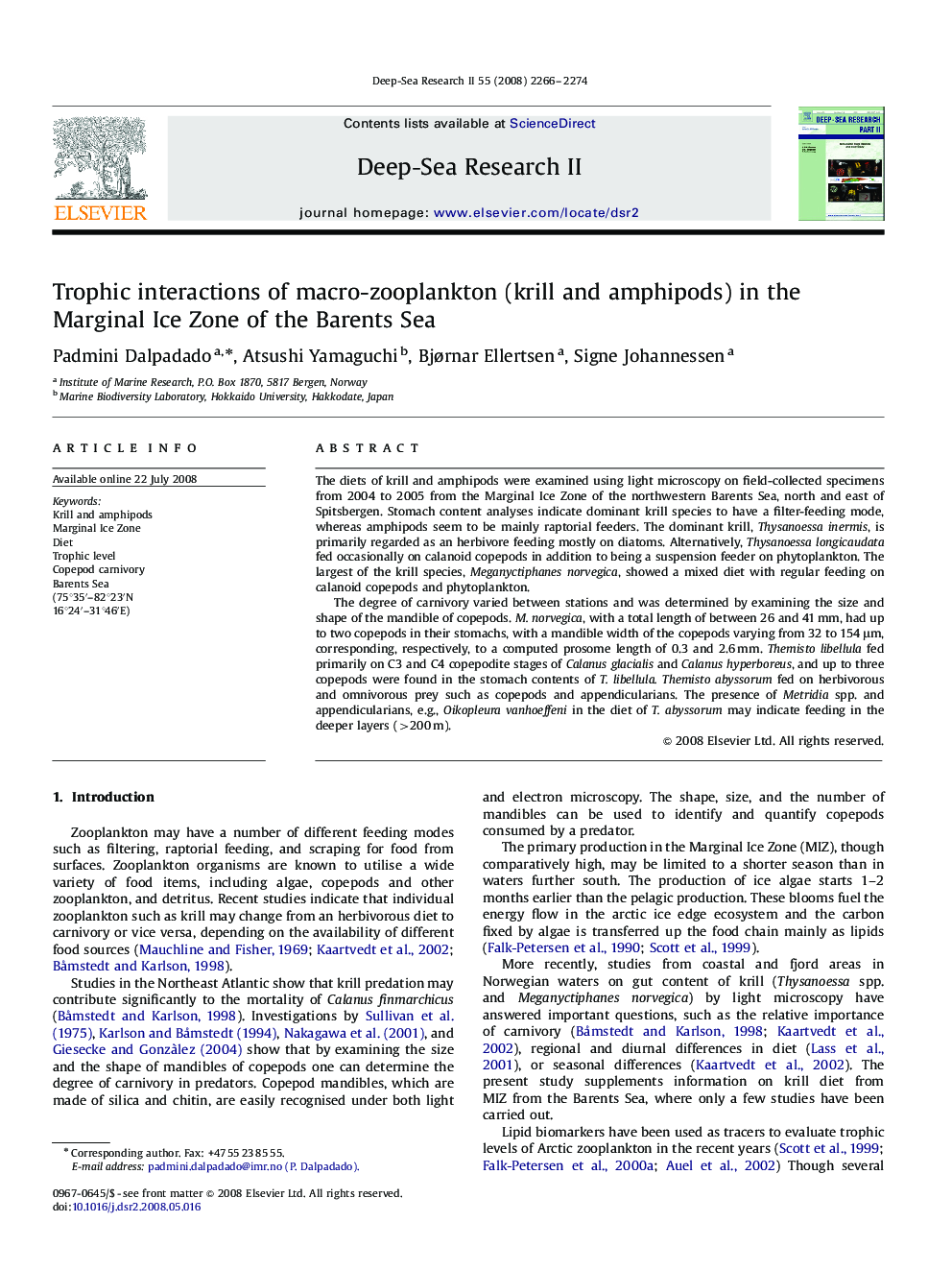| Article ID | Journal | Published Year | Pages | File Type |
|---|---|---|---|---|
| 4537949 | Deep Sea Research Part II: Topical Studies in Oceanography | 2008 | 9 Pages |
The diets of krill and amphipods were examined using light microscopy on field-collected specimens from 2004 to 2005 from the Marginal Ice Zone of the northwestern Barents Sea, north and east of Spitsbergen. Stomach content analyses indicate dominant krill species to have a filter-feeding mode, whereas amphipods seem to be mainly raptorial feeders. The dominant krill, Thysanoessa inermis, is primarily regarded as an herbivore feeding mostly on diatoms. Alternatively, Thysanoessa longicaudata fed occasionally on calanoid copepods in addition to being a suspension feeder on phytoplankton. The largest of the krill species, Meganyctiphanes norvegica, showed a mixed diet with regular feeding on calanoid copepods and phytoplankton.The degree of carnivory varied between stations and was determined by examining the size and shape of the mandible of copepods. M. norvegica, with a total length of between 26 and 41 mm, had up to two copepods in their stomachs, with a mandible width of the copepods varying from 32 to 154 μm, corresponding, respectively, to a computed prosome length of 0.3 and 2.6 mm. Themisto libellula fed primarily on C3 and C4 copepodite stages of Calanus glacialis and Calanus hyperboreus, and up to three copepods were found in the stomach contents of T. libellula. Themisto abyssorum fed on herbivorous and omnivorous prey such as copepods and appendicularians. The presence of Metridia spp. and appendicularians, e.g., Oikopleura vanhoeffeni in the diet of T. abyssorum may indicate feeding in the deeper layers (>200 m).
